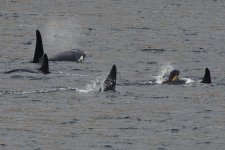Farnboro John
Well-known member
Is it? Why would an independent BBC Natural History Unit not make and broadcast such a programme?It seems the BBC series is five programmes but there is a sixth funded by/produced for the RSPB and WWF that was never planned as part of the main series but the BBC will have it on iPlayer.
So today's outrage, based on a Telegraph article it seems, is a little off the mark.
I look forward to the inception of the GB News Natural History Unit.....
John







